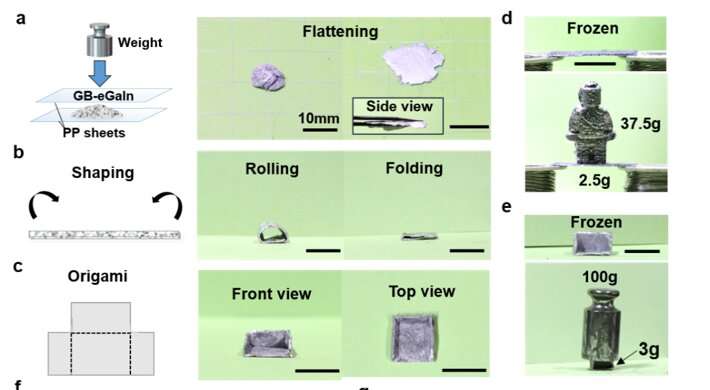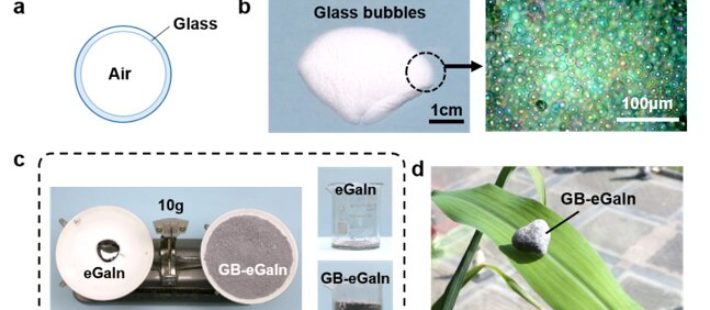Room temperature liquid metal, for example Gallium-based alloy, has high electrical and thermal conductivity, and excellent fluidity. They can be used in various application fields such as flexible electronics, wearable devices, biomedical practices, and so on. However, components made by liquid metal may heavier than non-metal ones. The density of metal is larger than non-metal materials like polymer, plastics and wood.
Recently, a joint research team led by Prof. Liu Jing from the Technical Institute of Physics and Chemistry (TIPC) of the Chinese Academy of Sciences and Tsinghua University, proposed a concept termed as “lightweight liquid metal entity” and invented a group of lightweight liquid metal materials. The work was published in Advanced Functional Materials.
In their work, a representative composite material GB-eGaIn was fabricated based on eGaIn and hollow glass bubble. GB-eGaIn has low density, high ductility and stiffness variability.
According to their study, GB-eGaIn can be moulded into thin sheets due to its high adhesion. The sheet can be rolled or folded easily and “transformed” to 3-D structure via folding, cutting or assembling processing.
GB-eGaIn sheet also performs well in phase transition. By controlling the temperature regulation, the sheet can shift easily between completely soft state and rigid metal object. The results indicated GB-eGaIn’s capability for constructing temperature-tuned functional components.

Combining with water-proof package materials, GB-eGaIn can realise floating and sinking behaviour by adding of water. According to the recorded resistance variation of the same component both in water and after drying, researchers from Prof. LIU’s team proved that GB-eGaIn has only slight change even after reuse for eight times.

They also demonstrated GB-eGaIn components combined with magnet can be controlled moving, suspending and sinking under regulation of external magnetic field and package materials. It could be used in developing advanced smart underwater devices.
Figure on the top: GB-eGaIn. Credit: LIU Jing
Source: Phys.org – Any editorial changes are made by Compositi magazine











